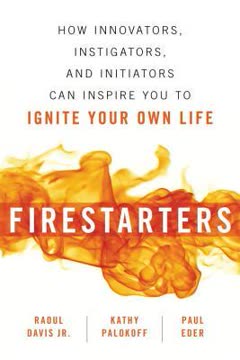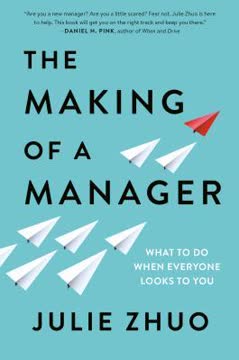मुख्य निष्कर्ष
1. कार्यस्थल के असभ्य लोगों की पहचान करें
जब आप कथित असभ्य व्यक्ति से बात करते हैं, तो क्या "लक्ष्य" उस व्यक्ति द्वारा दबाव, अपमान, ऊर्जा की कमी या तिरस्कार का अनुभव करता है? विशेष रूप से, क्या लक्ष्य अपने बारे में और भी बुरा महसूस करता है?
दो-भागीय परीक्षण। कार्यस्थल के असभ्य लोगों की पहचान करने के लिए एक दो-भागीय परीक्षण लागू करें:
- क्या व्यक्ति बातचीत के बाद दूसरों को अपमानित, ऊर्जा-हीन या तिरस्कृत महसूस कराता है?
- क्या व्यक्ति अपनी विषाक्तता को कमज़ोर लोगों की ओर लक्षित करता है, न कि शक्तिशाली लोगों की ओर?
सामान्य व्यवहार। असभ्य लोग आमतौर पर "गंदे बारह" कार्यों में संलग्न होते हैं:
- व्यक्तिगत अपमान
- व्यक्तिगत क्षेत्र का अतिक्रमण
- बिना आमंत्रण के शारीरिक संपर्क
- धमकियाँ और डराना
- व्यंग्यात्मक चुटकुले और चिढ़ाना
- अपमानजनक ईमेल
- स्थिति के थप्पड़
- सार्वजनिक अपमान
- अशिष्ट हस्तक्षेप
- दोमुंहे हमले
- घृणित नज़रें
- लोगों को अदृश्य मानना
अस्थायी बनाम प्रमाणित। अस्थायी असभ्य लोगों (कभी-कभी बुरा व्यवहार) और प्रमाणित असभ्य लोगों (दूसरों को अपमानित करने का लगातार पैटर्न) के बीच अंतर करें। अधिकांश लोग कभी-कभी असभ्य व्यवहार करते हैं, लेकिन प्रमाणित असभ्य लोग लगातार पीड़ितों को और भी बुरा महसूस कराते हैं।
2. असभ्य लोगों द्वारा उत्पन्न व्यापक नुकसान को पहचानें
एक व्यक्ति का कमजोर लोगों के साथ व्यवहार और शक्तिशाली लोगों के साथ व्यवहार के बीच का अंतर मानव चरित्र का एक अच्छा माप है।
पीड़ितों को नुकसान। असभ्य लोग अपने लक्ष्यों पर महत्वपूर्ण नुकसान पहुंचाते हैं:
- नौकरी की संतोषजनकता और उत्पादकता में कमी
- तनाव, चिंता और अवसाद में वृद्धि
- शारीरिक स्वास्थ्य समस्याएँ
- रचनात्मकता और समस्या-समाधान क्षमताओं में कमी
- उच्च टर्नओवर दरें
संगठनात्मक लागत। असभ्य लोगों की उपस्थिति पूरे कार्यस्थल पर नकारात्मक प्रभाव डालती है:
- समग्र उत्पादकता और कार्य की गुणवत्ता में कमी
- अनुपस्थिति और टर्नओवर में वृद्धि
- भर्ती और प्रशिक्षण की उच्च लागत
- कंपनी की प्रतिष्ठा को नुकसान
- संभावित कानूनी जिम्मेदारियाँ
तरंग प्रभाव। प्रभाव सीधे पीड़ितों से परे फैला होता है:
- गवाहों और दर्शकों में तनाव बढ़ता है
- सहयोगी कम सहयोगी और अधिक भयभीत हो जाते हैं
- संगठनात्मक संस्कृति विषाक्त और भय-आधारित हो जाती है
- यहां तक कि असभ्य लोग भी करियर में बाधाएँ और प्रतिष्ठा को नुकसान उठाते हैं
इन प्रभावों को मापने के लिए, संगठन अपने "असभ्य लोगों की कुल लागत" (TCA) की गणना कर सकते हैं, जो टर्नओवर, खोई हुई उत्पादकता, कानूनी मुद्दों और अन्य असभ्य संबंधित समस्याओं से संबंधित खर्चों का अनुमान लगाते हैं।
3. "नो असभ्य नियम" को लागू और लागू करें
सही व्यवसायिक दर्शन और प्रबंधन प्रथाओं का होना "नो असभ्य नियम" का समर्थन करने के लिए बेकार है जब तक कि आप अपने सामने खड़े व्यक्ति के साथ सही तरीके से व्यवहार नहीं करते।
नियम स्थापित करें। अपने संगठन में "नो असभ्य नियम" को स्पष्ट रूप से संप्रेषित और औपचारिक करें:
- इसे कंपनी के मूल्यों और नीतियों में शामिल करें
- इसे भर्ती और ऑनबोर्डिंग प्रक्रियाओं के दौरान चर्चा करें
- इसे प्रदर्शन मूल्यांकन और पदोन्नति के निर्णयों में एक कारक बनाएं
संगतता से लागू करें। नियम को बनाए रखने के लिए कार्रवाई करें:
- भर्ती के दौरान संभावित असभ्य लोगों को बाहर करें
- अस्थायी असभ्य लोगों को सुधारने के लिए फीडबैक और कोचिंग प्रदान करें
- लगातार अपराधियों को हटा दें, भले ही वे उच्च प्रदर्शन करने वाले हों
- नियम को ग्राहकों और क्लाइंट्स पर भी लागू करें, न कि केवल कर्मचारियों पर
उदाहरण द्वारा नेतृत्व करें। नेतृत्व को सम्मानजनक व्यवहार का उदाहरण प्रस्तुत करना चाहिए:
- सभी इंटरैक्शन में शिष्टता का प्रदर्शन करें
- छोटे उल्लंघनों को तुरंत संबोधित करें
- उन लोगों का जश्न मनाएं जो नियम का पालन करते हैं
- अपनी असभ्य व्यवहार को स्वीकार करने और सुधारने के लिए तैयार रहें
याद रखें कि नियम का कोई अर्थ नहीं है जब तक कि इसे दैनिक इंटरैक्शन में लगातार लागू नहीं किया जाता। छोटे व्यवहारों को बदलने और "क्षणों का प्रबंधन" करने पर ध्यान केंद्रित करें ताकि सम्मान की एक स्थायी संस्कृति बनाई जा सके।
4. अपने अंदर के असभ्य को प्रबंधित करें ताकि आप असभ्य न बनें
यह स्वीकार करना कि आप असभ्य हैं, पहला कदम है।
स्व-चेतना। अपने असभ्य बनने की संभावनाओं को पहचानें:
- बुरे व्यवहार के अतीत के उदाहरणों को स्वीकार करें
- अपने ट्रिगर्स और कमजोरियों को समझें
- दूसरों से फीडबैक प्राप्त करें कि आप कैसे देखे जाते हैं
निवारक रणनीतियाँ। असभ्य व्यवहार से बचने के लिए सक्रिय कदम उठाएं:
- असभ्य लोगों से भरे समूहों या संगठनों में शामिल होने से बचें
- प्रतिस्पर्धात्मक स्थितियों को सहयोग पर ध्यान केंद्रित करने के लिए पुनः फ्रेम करें
- सहानुभूति का अभ्यास करें और दूसरों के दृष्टिकोण पर विचार करें
- अपने कार्यों का मूल्यांकन करने के लिए "असभ्य परीक्षण" का उपयोग करें
पाठ्यक्रम सुधार। जब आप चूक करें, तो जिम्मेदारी लें:
- अपमानजनक व्यवहार के लिए ईमानदारी से माफी मांगें
- सोचें कि चूक का कारण क्या था
- भविष्य में ऐसी घटनाओं को रोकने के लिए ठोस योजनाएँ बनाएं
याद रखें कि हर किसी में कुछ परिस्थितियों में असभ्य बनने की क्षमता होती है। अपने "अंदर के असभ्य" को नियंत्रित रखने के लिए निरंतर सतर्कता और आत्म-प्रतिबिंब आवश्यक है।
5. असभ्य लोगों से भरे कार्यस्थल में जीवित रहें
जो आपकी आत्मा को अपमानित करता है, उसे नजरअंदाज करें।
भावनात्मक अलगाव। अपने को सुरक्षित रखने के लिए रणनीतियाँ विकसित करें:
- नकारात्मक इंटरैक्शन को पुनः फ्रेम करें ताकि आत्म-निंदा से बच सकें
- मानसिक स्वास्थ्य को बनाए रखने के लिए उदासीनता का अभ्यास करें
- छोटे जीतों और उन क्षेत्रों पर ध्यान केंद्रित करें जहाँ आपके पास नियंत्रण है
संपर्क सीमित करें। जब संभव हो, असभ्य लोगों के साथ संपर्क कम करें:
- ज्ञात अपराधियों के साथ कम बैठकें करें
- इंटरैक्शन को बफर करने के लिए प्रौद्योगिकी का उपयोग करें (जैसे, आमने-सामने के बजाय ईमेल)
- सहायक सहयोगियों के साथ "सुरक्षा के पॉकेट" बनाएं
योजनाबद्ध प्रतिक्रियाएँ। जब सामना करना आवश्यक हो:
- शांत और पेशेवर रहें
- अपमानजनक व्यवहार का दस्तावेजीकरण करें
- स्थितियों को शांत करने के लिए हास्य या हल्की पुनः शिक्षा का उपयोग करें
- यदि आवश्यक हो, तो एचआर या उच्च प्रबंधन से सहायता प्राप्त करें
हालांकि ये रणनीतियाँ आपको सहन करने में मदद कर सकती हैं, याद रखें कि असभ्य लोगों के प्रति दीर्घकालिक संपर्क हानिकारक है। अपनी स्थिति को सुधारने के तरीके खोजते रहें या एक अधिक सकारात्मक कार्य वातावरण खोजें।
6. असभ्य लोगों के दुर्लभ लाभों को समझें
यदि आप अपने और अपने संगठन के लिए सबसे अच्छे असभ्य बनना चाहते हैं, तो "क्या आप एक प्रभावी असभ्य बनना चाहते हैं?" देखें।
शक्ति और डराना। असभ्य व्यवहार कभी-कभी:
- प्रतिस्पर्धात्मक वातावरण में शक्ति प्राप्त करने और बनाए रखने में मदद कर सकता है
- प्रतिद्वंद्वियों और प्रतिस्पर्धियों को डराने में सक्षम होता है
- क्षमता या विशेषज्ञता की धारणा पैदा करता है
प्रेरणा और प्रदर्शन। विशिष्ट संदर्भों में, असभ्य नेता:
- डर-आधारित प्रदर्शन सुधार को प्रेरित कर सकते हैं
- पूर्णता और उच्च मानकों के लिए दबाव डाल सकते हैं
- कठोर आलोचना और दुर्लभ प्रशंसा के मिश्रण के माध्यम से प्रेरित कर सकते हैं
आवश्यक टकराव। कभी-कभी "असभ्य क्षण" की आवश्यकता हो सकती है:
- अन्यायपूर्ण व्यवहार या नीतियों का सामना करने के लिए
- वास्तव में अक्षम या अनैतिक व्यवहार का सामना करने के लिए
- असंगत ग्राहकों या क्लाइंट्स के खिलाफ खड़े होने के लिए
हालांकि, ये संभावित लाभ अक्सर असभ्य लोगों द्वारा उत्पन्न महत्वपूर्ण नुकसान से अधिक होते हैं। अधिकांश सफल लोग और संगठन अपनी सकारात्मक विशेषताओं के कारण फलते-फूलते हैं, न कि उनके असभ्य प्रवृत्तियों के कारण।
7. नो असभ्य नियम को जीवन के तरीके के रूप में लागू करें
हमें यहाँ पृथ्वी पर केवल इतने ही घंटे दिए गए हैं। क्या यह अद्भुत नहीं होगा यदि हम अपने जीवन में ऐसे लोगों से मिले बिना यात्रा कर सकें जो हमें अपने अपमानजनक टिप्पणियों और कार्यों से नीचे लाते हैं?
व्यक्तिगत प्रतिबद्धता। जीवन के सभी पहलुओं में नो असभ्य नियम को अपनाएं:
- सभी के साथ सम्मान के साथ व्यवहार करने का प्रयास करें, चाहे उनकी स्थिति कुछ भी हो
- अपने असभ्य व्यवहार को पहचानने और सुधारने में तत्पर रहें
- व्यक्तिगत और पेशेवर सेटिंग्स में असभ्य लोगों के साथ संबंध बनाने से बचें
सामूहिक जिम्मेदारी। दूसरों को नियम का पालन करने के लिए प्रोत्साहित करें:
- जब आप असभ्य व्यवहार देखते हैं, तो बोलें
- अपमानजनक व्यवहार के पीड़ितों का समर्थन करें
- उन लोगों का जश्न मनाएं और उन्हें पुरस्कृत करें जो लगातार दूसरों के साथ अच्छा व्यवहार करते हैं
संस्कृति में बदलाव। असभ्य-मुक्त वातावरण बनाने के लिए काम करें:
- अपने कार्यस्थल में नो असभ्य नीतियों का समर्थन करें
- उन कंपनियों के साथ व्यापार करने का चयन करें जो शिष्टता को महत्व देती हैं
- बच्चों को बढ़ाएं और दूसरों को मानव गरिमा का सम्मान करना सिखाएं
नो असभ्य नियम को लगातार लागू करके, हम अपने और दूसरों के लिए अधिक सकारात्मक, उत्पादक और संतोषजनक वातावरण बना सकते हैं। याद रखें कि छोटे कार्य और दैनिक इंटरैक्शन एक अधिक सभ्य समाज के निर्माण के लिए आधारशिला हैं।
अंतिम अपडेट:
FAQ
What's "The No Asshole Rule" about?
- Book Overview: "The No Asshole Rule" by Robert I. Sutton is about creating a civilized workplace by identifying, managing, and eliminating toxic behavior, specifically focusing on individuals who demean and belittle others.
- Core Concept: The book introduces the "no asshole rule," a guideline for organizations to prevent and address the presence of individuals who negatively impact workplace culture and productivity.
- Practical Advice: Sutton provides strategies for implementing the rule, including hiring practices, management techniques, and personal behavior adjustments to foster a respectful and supportive work environment.
- Personal and Organizational Impact: The book explores the damage caused by toxic individuals to both victims and organizations, emphasizing the importance of maintaining a positive workplace culture for overall success.
Why should I read "The No Asshole Rule"?
- Understanding Workplace Dynamics: The book offers insights into how toxic behavior affects workplace morale and productivity, helping readers recognize and address these issues.
- Practical Solutions: Sutton provides actionable strategies for individuals and organizations to implement the no asshole rule, making it a valuable resource for improving workplace culture.
- Personal Development: Readers can learn how to manage their own behavior and interactions, reducing the risk of becoming a toxic influence themselves.
- Broader Implications: The book's principles can be applied beyond the workplace, offering guidance on fostering respectful and supportive relationships in various aspects of life.
What are the key takeaways of "The No Asshole Rule"?
- Identify Toxic Behavior: Recognize the signs of toxic individuals, such as personal insults, public shaming, and treating people as invisible, to address and prevent their impact.
- Implement the Rule: Organizations should integrate the no asshole rule into their culture by screening potential hires, managing current employees, and enforcing consequences for toxic behavior.
- Focus on Small Interactions: Change happens in everyday interactions; fostering a culture of respect requires attention to how people treat each other in small moments.
- Personal Responsibility: Individuals should be aware of their own behavior, striving to avoid becoming a source of negativity and instead contributing to a positive environment.
How does Robert I. Sutton define an "asshole" in the workplace?
- Two Tests: Sutton defines an "asshole" as someone who consistently leaves others feeling oppressed, humiliated, or de-energized, and who directs their venom at less powerful individuals.
- Dirty Dozen: He provides a list of common behaviors, such as personal insults, sarcastic jokes, and public shaming, that characterize toxic individuals.
- Temporary vs. Certified: Sutton distinguishes between temporary assholes, who occasionally exhibit toxic behavior, and certified assholes, who consistently display such behavior across different situations.
- Impact on Others: The definition emphasizes the negative effects on victims and bystanders, highlighting the importance of addressing these behaviors to maintain a healthy workplace.
What strategies does "The No Asshole Rule" suggest for implementing the rule in organizations?
- Hiring Practices: Screen candidates for toxic behavior during the hiring process, involving multiple interviewers to ensure a comprehensive assessment.
- Management Techniques: Train managers to recognize and address toxic behavior, providing support and resources for dealing with difficult individuals.
- Cultural Integration: Make the no asshole rule a core part of the organization's values, communicating its importance and consequences for violations.
- Continuous Monitoring: Regularly assess the workplace environment and employee interactions to ensure the rule is being upheld and adjust strategies as needed.
How can individuals manage their own "inner jerk" according to Robert I. Sutton?
- Self-Awareness: Recognize personal triggers and situations that may lead to toxic behavior, and actively work to manage these responses.
- Emotional Detachment: Develop strategies for maintaining emotional distance from negative situations, reducing the likelihood of reacting poorly.
- Reframing: Change the way you perceive challenging interactions, focusing on positive aspects and potential solutions rather than dwelling on negativity.
- Seek Feedback: Regularly solicit feedback from colleagues and peers to gain insight into how your behavior is perceived and make necessary adjustments.
What are the potential benefits of enforcing "The No Asshole Rule" in the workplace?
- Improved Morale: A respectful and supportive environment boosts employee morale, leading to increased job satisfaction and retention.
- Enhanced Productivity: Reducing toxic behavior minimizes distractions and conflicts, allowing employees to focus on their work and perform at their best.
- Attracting Talent: A positive workplace culture attracts top talent, as individuals seek environments where they feel valued and respected.
- Legal and Financial Benefits: Enforcing the rule can reduce the risk of legal issues related to harassment and discrimination, as well as decrease turnover and associated costs.
What are some of the best quotes from "The No Asshole Rule" and what do they mean?
- "The difference between how a person treats the powerless versus the powerful is as good a measure of human character as I know." This quote emphasizes the importance of treating everyone with respect, regardless of their status or power.
- "The best measure of human character is how you treat the person right in front of you, right now." It highlights the significance of everyday interactions in shaping workplace culture and personal relationships.
- "Assholes breed like rabbits." This metaphor underscores the rapid spread of toxic behavior if not addressed, emphasizing the need for proactive management.
- "The journey is the reward." While attributed to Steve Jobs, Sutton uses this quote to critique the idea that success justifies toxic behavior, advocating for a more humane approach to achieving goals.
How does "The No Asshole Rule" address the potential upside of being an asshole?
- Power and Influence: Sutton acknowledges that some individuals gain power and influence through intimidation and aggressive behavior, though he argues this is not sustainable.
- Motivating Performance: Fear-driven environments can lead to short-term performance gains, but they often result in long-term damage to morale and productivity.
- Strategic Use: In certain situations, displaying controlled aggression can be effective, but Sutton warns against relying on this approach as a primary management strategy.
- Overall Impact: While there may be temporary benefits, the book emphasizes that the long-term consequences of toxic behavior outweigh any short-term gains.
What are some real-world examples of organizations successfully implementing "The No Asshole Rule"?
- Southwest Airlines: Known for its strong company culture, Southwest enforces the rule by hiring and firing based on attitude and behavior, ensuring a supportive work environment.
- Google: The company integrates the rule into its performance evaluations, discouraging toxic behavior and promoting a collaborative culture.
- Men's Wearhouse: The retailer prioritizes team chemistry and mutual respect, demonstrating the rule's effectiveness in improving store performance and employee satisfaction.
- JetBlue Airlines: The airline applies the rule to both employees and customers, maintaining a positive atmosphere for staff and passengers alike.
How can someone survive in a workplace where "The No Asshole Rule" is not enforced?
- Reframe Experiences: Change your perspective on negative interactions, focusing on what you can control and maintaining emotional distance from toxic individuals.
- Seek Support: Build a network of supportive colleagues and allies who can provide encouragement and advice for coping with difficult situations.
- Limit Exposure: Minimize contact with toxic individuals by avoiding unnecessary meetings and interactions, and use technology to buffer yourself when possible.
- Focus on Small Wins: Identify and pursue small victories that can improve your work environment and boost your sense of control and accomplishment.
What is the "Total Cost of Assholes" (TCA) concept in "The No Asshole Rule"?
- Financial Impact: TCA refers to the direct and indirect costs associated with toxic behavior, including increased turnover, absenteeism, and legal expenses.
- Productivity Loss: Toxic individuals can reduce overall productivity by creating a hostile work environment, leading to decreased motivation and focus among employees.
- Reputation Damage: Organizations that tolerate toxic behavior risk damaging their reputation, making it difficult to attract and retain top talent.
- Comprehensive Assessment: Sutton encourages organizations to calculate their TCA to understand the full impact of toxic behavior and justify the implementation of the no asshole rule.
समीक्षाएं
नो असहिष्णुता नियम को मिश्रित समीक्षाएँ मिलती हैं, कुछ लोग कार्यस्थल के उत्पीड़कों से निपटने और एक सभ्य वातावरण बनाने के लिए इसके व्यावहारिक सुझावों की प्रशंसा करते हैं। आलोचक इसे दोहरावदार और गहराई की कमी वाला मानते हैं। कई लोग सटन के सीधे दृष्टिकोण और शोध-समर्थित अंतर्दृष्टियों की सराहना करते हैं, जबकि अन्य को लगता है कि प्रस्तुत समाधान अपर्याप्त हैं। इस पुस्तक की ताकत इसमें निहित है कि यह असहिष्णु व्यक्तियों की पहचान करने और उन्हें नौकरी पर न रखने के लिए मार्गदर्शन प्रदान करती है, लेकिन कुछ पाठकों को कार्यस्थल में पहले से मौजूद असहिष्णु व्यक्तियों से निपटने के लिए दिए गए सुझाव निराशाजनक लगते हैं। कुल मिलाकर, इसे प्रबंधकों और कठिन सहयोगियों से निपटने वाले लोगों के लिए एक उपयोगी संसाधन माना जाता है।
Similar Books















